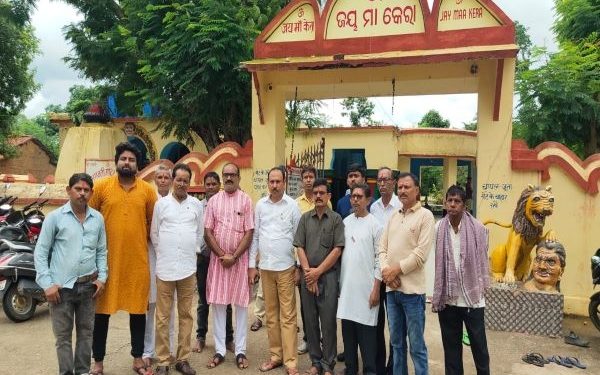Ranchi: Nine forms of Goddess Durga are worshiped on nine days of Navratri, but there are four Devi Peeths in Jharkhand where the Shardiya Navratri is celebrated for 16 days. Devotees every Navratri throng these deity sites having specific traditions, beliefs and historical stories.
This year Navratri started on September 26, and will end on October 4. Seven days ago on September 19 (Ashwin Krishna Paksha Navami), the next day of Jitiya (Jive-putrika Vrat), Navratri rituals started in these four temples of Jharkhand with the installation of Kalash.
The Goddess peeths where Navratri rituals take place for 16 days include the Ugratara temple at Chandwa in Latehar district, the Kolbendi temple in Bokaro district, the Kera temple at Chaibasa and the Maa Pauri temple at Rajagarh in Seraikela-Kharsawan.
Regarding the belief behind the 16-day Navratri worship, Acharya Santosh Pandey says that Lord Rama worshiped Goddess Durga for 16 days by setting up a Bodhan Kalash for the victory over Lanka. In many royal houses of Jharkhand, this tradition has been continued for four-five hundred years. There is probably no other place in the whole of India that has a tradition of 16 days of Navratri rituals.
Out of these four temples, Maa Ugratara Nagar Temple located in Latehar’s Chandwa is recognized as a Siddha Shaktipeeth. This temple is said to be thousands of years old. Normally, Navratri rituals of 16 days are held here in Shardiya Navratri, but if Malmas is associated with the month of Navratri, then Navratri rituals of 45 days are celebrated in that year.
According to the Hindu calendar, after every three years, there comes a year, in which instead of 12, there are 13 months – one extra month. This is called Malmas.
The special thing is that the worship in Maa Ugratara Nagar Temple is done according to the handwritten book about 500 years ago. The pages of this book are still perfectly preserved and the letters are shiny. Devotees from different parts of Jharkhand as well as neighbouring states of Bihar, West Bengal, Uttar Pradesh, Madhya Pradesh, Odisha and Chhattisgarh keep coming here.
The priests of the temple, Pandit Akhilanand Mishra and Pandit Vinay Mishra say that after 16 days of worship, paan is offered to Goddess Bhagwati on Vijayadashami. When the paan itself falls from the seat, it is believed that Bhagwati gave permission for immersion. During this, ‘aarti’ is performed every two minutes. Sometimes the paan does not fall for the whole night and the round of aarti continues continuously.
The stories of the royal family are also associated with this temple. It is said that the then king had gone to the Mankeri forest of Latehar to take a look. Where the idols of the goddesses were coming in the hands of the king while drinking water in the Toda pond. But the king put the idols in the pond. Then Bhagwati came in the king’s dream and asked him to bring the idols to the palace.
After this the king reached his palace with the idols from the pond and got the temple built in the courtyard. It is also said that Maratha queen Ahilyabai also came to offer prayers at Maa Ugratara temple.
Muslims also have a deep connection with temple traditions. The responsibility of arranging the drums played in the temple rests with the Muslims. Behind the temple, that is, towards the east, is the tomb of Madar Shah. It is said that there were scores of devotees of Bhagwati in Madar Shah Nagar. At the time of Vijayadashami, five flags are raised in the temple, while the sixth white coloured flag is sent to be raised over the tomb of Madar Shah.
Similarly, in the more than 350 years old Kolbendi Durga temple of Bokaro, there is a 16-day Navratri ritual. According to Chandicharan Banerjee, the priest of Kolbendi Durga temple, Thakur Kishan Dev had built the temple. His descendants are carrying on the tradition even today.
In the Seraikela royal family, there is a 16-day Navratri ritual from the year 1620. King Vikram Singhdev of this dynasty started worship in the palace complex. Nuakhai is held here on Navami.
Devotees from Jharkhand, Odisha and West Bengal also arrive every year during the 16-day Navratri rituals at the 400-year-old historical Maa Bhagwati Kera Devi temple in West Singhbhum district’s Chakradharpur.
IANS






































